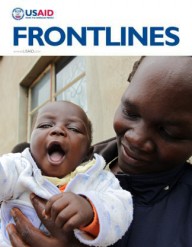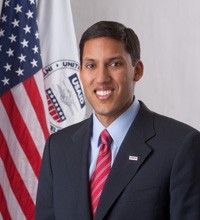Development is a discipline, not simply a good deed.
It requires strategic planning, evidence-based approaches and robust monitoring and evaluation to create a foundation for success. It requires tough trade-offs and a new emphasis on supporting local solutions that lead to sustainable change. Most importantly, it requires us to move from a traditional model of top-down development to a new model that engages talent and innovation everywhere.
In just the last year, I’ve seen the power of these principles translate into profoundly meaningful results for some of the most vulnerable people around the world.
In Nairobi, Kenya, I met young leaders in a grassroots movement we helped forge called “Yes Youth Can.” These were the kids who had witnessed an explosion of violence around their homes and in their communities after the 2007 election. These were the kids who had lost a father or a sister or had born the brutality of the attacks themselves.
But instead of becoming victims of that tragedy, they became leaders of hope. As the 2013 elections approached, they stood together—1 million strong—and helped carry their nation forward in peace.
In Rangoon, Burma, I met hundreds of computer science students who had grown up in isolation and oppression and were brimming with excitement. Inspired by the Googles and Microsofts of the world, they were eager for opportunities to connect with these innovation highways to change their country. While media coverage of Burma’s transition has focused on the decisions of the leaders at the top, the real engine of change is coming from these students at the grassroots.
And in Mogadishu, Somalia—a city once synonymous with the word “war”—I saw a nation alive with new possibilities. Only a year earlier, I had visited the region in the grips of a devastating famine—one of the hardest trips I’ve ever taken. I saw starving children days away from death—some of whom we were able to save, but many of whom we could not. I saw their small bodies wrapped in blankets lying on cots next to their siblings who were still fighting for life.
From this devastating past, we are helping build a better future. Today, we’re partnering with communities to create new jobs, plant more resilient crops and turn on the lights—enabling the population to celebrate peace and stability for the first time in decades.
Though miles apart, these examples reflect an approach to accelerating human progress that is not only changing the way we work, but actually putting us within reach of goals that were simply unimaginable in the past.
Earlier this year, in his State of the Union address, President Barack Obama gave voice to this vision when he called upon us to join the world in ending extreme poverty in the next two decades. As we shift from development being a task carried out by institutions to a movement that connects the best and the brightest around the world, I believe we can come together to answer the president’s call and achieve one of the greatest legacies in history.










Comment
Make a general inquiry or suggest an improvement.